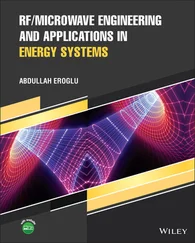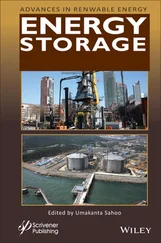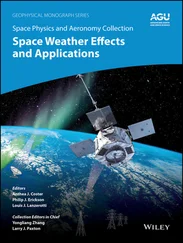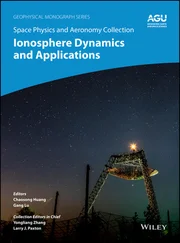Ibrahim Dincer - Thermal Energy Storage Systems and Applications
Здесь есть возможность читать онлайн «Ibrahim Dincer - Thermal Energy Storage Systems and Applications» — ознакомительный отрывок электронной книги совершенно бесплатно, а после прочтения отрывка купить полную версию. В некоторых случаях можно слушать аудио, скачать через торрент в формате fb2 и присутствует краткое содержание. Жанр: unrecognised, на английском языке. Описание произведения, (предисловие) а так же отзывы посетителей доступны на портале библиотеки ЛибКат.
- Название:Thermal Energy Storage Systems and Applications
- Автор:
- Жанр:
- Год:неизвестен
- ISBN:нет данных
- Рейтинг книги:4 / 5. Голосов: 1
-
Избранное:Добавить в избранное
- Отзывы:
-
Ваша оценка:
- 80
- 1
- 2
- 3
- 4
- 5
Thermal Energy Storage Systems and Applications: краткое содержание, описание и аннотация
Предлагаем к чтению аннотацию, описание, краткое содержание или предисловие (зависит от того, что написал сам автор книги «Thermal Energy Storage Systems and Applications»). Если вы не нашли необходимую информацию о книге — напишите в комментариях, мы постараемся отыскать её.
Provides students and engineers with up-to-date information on methods, models, and approaches in thermal energy storage systems and their applications in thermal management and elsewhere Thermal Energy Storage: Systems and Applications
Thermal Energy Storage: Systems and Applications, Third Edition
Thermal Energy Storage Systems and Applications — читать онлайн ознакомительный отрывок
Ниже представлен текст книги, разбитый по страницам. Система сохранения места последней прочитанной страницы, позволяет с удобством читать онлайн бесплатно книгу «Thermal Energy Storage Systems and Applications», без необходимости каждый раз заново искать на чём Вы остановились. Поставьте закладку, и сможете в любой момент перейти на страницу, на которой закончили чтение.
Интервал:
Закладка:
5 Chapter 5Figure 5.1 Grid structuring for two flow cases. (a) 500 cells of equal size ...Figure 5.2 Velocity profiles for two flow cases, characterized by the grid s...Figure 5.3 Velocity profile with a single time step of 25 seconds.Figure 5.4 Solution procedure flow chart for the coupled pressure‐based solu...Figure 5.5 Cross‐sectional views of the cell density in the (a) radial plane...Figure 5.6 Temperature distributions (in K) for the storage tank at four hou...Figure 5.7 Velocity profiles (in m/s) for the storage tank at four hour inte...Figure 5.8 Volume‐averaged temperature in the storage tank over the 24‐hour ...Figure 5.9 Total energy storage and thermal energy loss over the 24‐hour coo...Figure 5.10 Total exergy storage and thermal exergy loss over the 24-hour co...Figure 5.11 Variation with time of the energy and exergy efficiencies of the...Figure 5.12 Schematic of physical domain of a thermal storage.Figure 5.13 Views of the computational grid for the hot water storage in the...Figure 5.14 Temperature distributions (in K) in a thermal storage tank at se...Figure 5.15 Temperature distributions (in K) in a thermal storage tank at se...Figure 5.16 Velocity contours in a thermal storage tank at selected times fo...Figure 5.17 Velocity contours in a thermal storage tank at selected times fo...Figure 5.18 Volume‐averaged temperatures of the water and insulation for a f...Figure 5.19 Volume‐averaged temperatures of the water and insulation for a f...Figure 5.20 Loss of thermal energy from the storage to the surroundings, for...Figure 5.21 Energy efficiencies of the storage, for two flow rates.Figure 5.22 Exergy lost from the storage to the surroundings due to heat lea...Figure 5.23 Exergy destruction in the storage due to irreversibilities and e...Figure 5.24 Exergy efficiencies of the storage, for two flow rates.Figure 5.25 Grid structure of the two‐dimensional surface representing the i...Figure 5.26 Variation in density in the cylinder at time t = 0. The darker r...Figure 5.27 Liquid and solid fractions in the storage domain at selected tim...Figure 5.28 Total energy transferred to the cylinder from the heated wall ov...Figure 5.29 Exergy efficiency and liquid fraction of the melting process wit...Figure 5.30 Quantities of exergy stored, destroyed, and input with wall heat...Figure 5.31 Experimental apparatus used for the charging and discharging of ...Figure 5.32 Wall grid volumes for the computational domain considered for a ...Figure 5.33 Views of the grid cell distributions, for (a) the axial, or flow...Figure 5.34 Comparison of numerical temperature profiles at three locations ...Figure 5.35 Liquid fraction as a function of time for the grid size independ...Figure 5.36 Liquid fraction as a function of time for the time step independ...Figure 5.37 Variation of liquid fraction for the charging and discharging ca...Figure 5.38 Variation of the energy stored and the heat generated through vi...Figure 5.39 Variation of the energy recovered and the heat generated through...Figure 5.40 Variation of energy and exergy efficiencies with dimensionless t...Figure 5.41 Variation of energy and exergy efficiencies with dimensionless t...Figure 5.42 Variation with dimensionless time t * of exergy stored, destroyed...Figure 5.43 Variation with dimensionless time t * of exergy recovered, destro...Figure 5.44 Exergy destroyed via viscous dissipation and heat transfer, and ...Figure 5.45 Energy and exergy efficiencies at the completion of the overall ...Figure 5.46 Overall energy and exergy efficiencies for charging and discharg...Figure 5.47 Exergy destroyed for several storage capsule geometries by visco...Figure 5.48 Physical model of ice TES system.Figure 5.49 Segment of ice TES system used for numerical simulation.Figure 5.50 Fluid velocity vectors around the PCM capsules.Figure 5.51 Variation with axial coordinate of the heat transfer correlation...Figure 5.52 Variation of Nusselt number with Peclet number for correlation o...Figure 5.53 (a) variation of temperature at two points in capsule with time ...Figure 5.54 (a) Variation of dimensionless time for complete solidification ...Figure 5.55 Variation of heat transfer rate with Fourier number for several ...Figure 5.56 Variation of heat transfer rate with Fourier number for several ...Figure 5.57 Variation of total energy stored with Fourier number for several...Figure 5.58 Geometries of ice capsules considered in the case study [45]....Figure 5.59 Control volume of the modeled ice capsule.Figure 5.60 Grid and time step size independency.Figure 5.61 Validation of employed numerical model and approach by consideri...Figure 5.62 Variation of volume fraction of liquid with time for various cap...Figure 5.63 Effect of inlet velocity of HTF on the discharging time for vari...Figure 5.64 HTF velocity contours for capsules A and D.Figure 5.65 Turbulence kinetic energy contours in HTF for capsules A and D....Figure 5.66 Effect of flow velocity of the HTF on energy efficiency, at inle...Figure 5.67 Effect of flow velocity of the HTF on exergy efficiency, at inle...
6 Chapter 6Figure 6.1 Classification of thermal management methods.Figure 6.2 Hybrid ammonia fuel cell and TES.Figure 6.3 Effect of current density on (a) voltage and (b) power density at...Figure 6.4 Effect of current density on (a) energy efficiency and (b) exergy...Figure 6.5 Effect of temperature on specific thermal energy storage capacity...Figure 6.6 Integrated building heating system consisting of a ground source ...Figure 6.7 Exergy destruction rates of the system components.Figure 6.8 Entropy generation rates of the system components.Figure 6.9 Efficiencies of the system without PCM and with PCMs of various t...Figure 6.10 Influence of PCM materials on system efficiencies relative to th...Figure 6.11 Volume and mass requirements for various PCMs.Figure 6.12 Water/PCM‐cooling‐plate‐based lithium‐ion battery module.Figure 6.13 Variations in module temperatures with cooling plate height.Figure 6.14 Variations of module temperatures with cell spacing, i.e., gap b...Figure 6.15 Variations of module temperatures with inlet mass flow rate of c...Figure 6.16 Variations of module temperatures with PCM thermal conductivity....Figure 6.17 Experimental setup for examining three battery thermal managemen...Figure 6.18 Effects of temperature variations on thermal conductivities.Figure 6.19 Variations of temperature difference of the module with cycle nu...Figure 6.20 Variations in temperature difference of the maximum temperature ...Figure 6.21 Minimum and maximum temperatures of the three considered configu...
7 Chapter 7Figure 7.1 Global electricity production through various sources.Figure 7.2 Annual change in global electricity production from renewable ene...Figure 7.3 Electricity generation from low‐carbon sources (nuclear, hydropow...Figure 7.4 Electricity generation from renewable energy sources. Other renew...Figure 7.5 Illustration of a solar tower energy collector with multiple ther...Figure 7.6 Primary mechanical energy storage options: (a) flywheel, (b) comp...Figure 7.7 Schematic illustration of electrochemical energy storage in the f...Figure 7.8 Schematic illustration of the solar energy‐based integrated syste...Figure 7.9 Variation in the number of heliostats ( N ) and total heliostat sur...Figure 7.10 Variation in the hot TES storage tank temperature ( T 2) and tempe...Figure 7.11 Variation in overall efficiencies with charging period duration....Figure 7.12 Variation in charged and lost heat with charging period duration...Figure 7.13 System layout of the integrated solar energy‐based system using ...Figure 7.14 Exergy destruction plus exergy loss rates (in kW) of components ...Figure 7.15 Exergy destruction plus exergy loss rate of the overall CAES pro...Figure 7.16 Thermal efficiencies of the overall CAES process and its subproc...Figure 7.17 Schematic illustration of the integrated system combining wind a...Figure 7.18 Effect of seawater speed on total electricity production rate an...Figure 7.19 Effect of wind turbine blade radius on total electricity product...Figure 7.20 Effect of current turbine blade radius on total electrical power...Figure 7.21 Effect of wind speed on t total electrical power generation and ...
Читать дальшеИнтервал:
Закладка:
Похожие книги на «Thermal Energy Storage Systems and Applications»
Представляем Вашему вниманию похожие книги на «Thermal Energy Storage Systems and Applications» списком для выбора. Мы отобрали схожую по названию и смыслу литературу в надежде предоставить читателям больше вариантов отыскать новые, интересные, ещё непрочитанные произведения.
Обсуждение, отзывы о книге «Thermal Energy Storage Systems and Applications» и просто собственные мнения читателей. Оставьте ваши комментарии, напишите, что Вы думаете о произведении, его смысле или главных героях. Укажите что конкретно понравилось, а что нет, и почему Вы так считаете.












